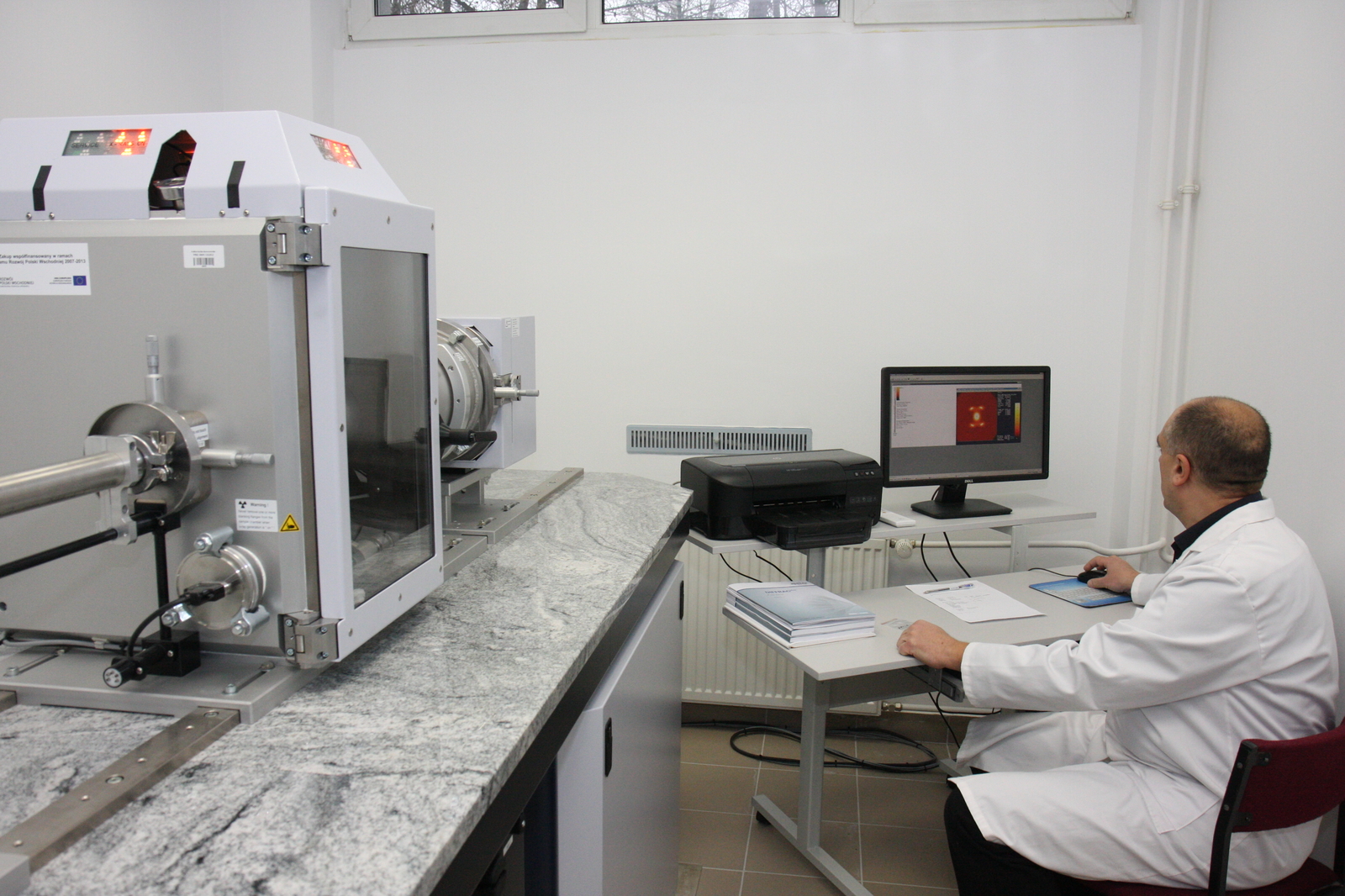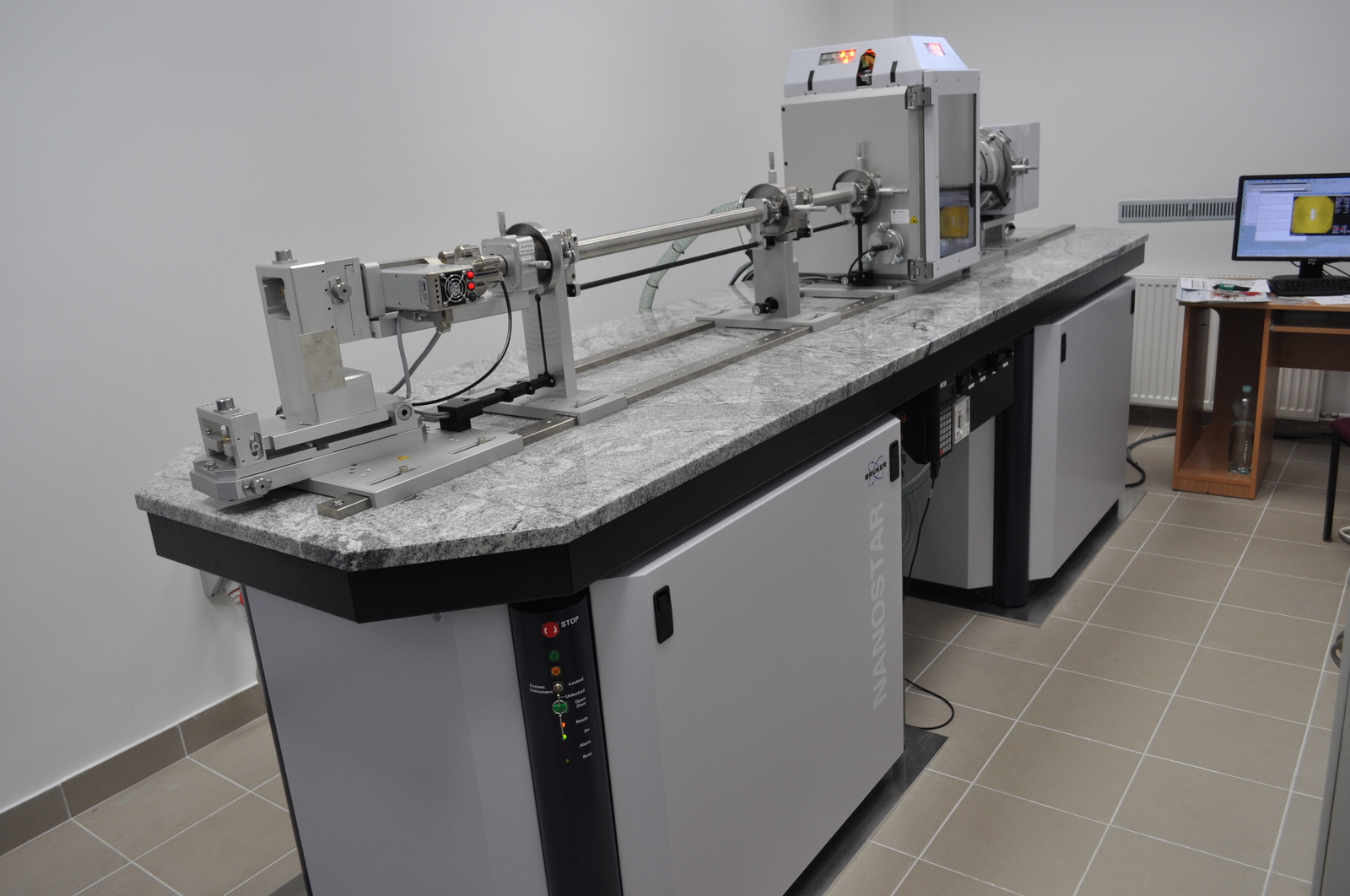Manager:
- Assoc. Prof. Grażyna Groszek, DSc, PhD, Eng.
Research facilities:
- 500 MHz NMR spectrometer Bruker AvanceTM,
Bogdan Myśliwiec, PhD, Eng, tel .: 17 865 1363, e-mail: mysliwbo@prz.edu.pl, laboratory. H.5a (NMR)
- SAXS X-ray diffractometer Bruker Nanostar-U.
Piotr Szałański, MSc, Eng., tel .: 17 743 2320, e-mail: pszalans@prz.edu.pl, laboratory. H.91 (SAXS)
Faculty of Spectrometry Laboratory
MAGNETIC NUCLEAR RESONANCE (NMR)
The laboratory is equipped with:
- Bruker AvanceII FT-NMR FT-NMR Spectrometer 500 MHz with superconducting magnet type ULTRASHIELD 500 PLUS with magnetic field strength of 11.7440 T
- Broadband Gradient Probe (BBI-z, 5 mm) with gradient in z axis. Measuring range 31P-, 109Ag. Maximum temperature range -150 ° C ÷ + 180 ° C.
- Double-Probe (DUL, 5 mm). Measuring range 1H / 13C. Maximum temperature range -150 ° C ÷ + 180 ° C.
- Low temperature bracket for resonance measurements in solutions. Minimum temperature -150 ° C.
The above mentioned probes are designed for nuclear magnetic resonance measurements in solutions.
The 1H, 13C, 11B, 31P, 15N, 19F and 29Si spectra of organic compounds and natural and synthetic polymers are recorded.
The spectrometer configuration allows NMR spectra to be recorded using measurement techniques such as DEPT, COSY, HSQC, HMBC, HETCOR, NOESY, ROESY and more.
Small-angle X-ray scattering (SAXS)



The laboratory is equipped with:
- Bruker Nanostar-U low-angle diffractometer working in copper transmission geometry (1.54 Å).
- Optics (crossed with Goebla mirrors) to receive a 500 micron parallel beam.
- Two-dimensional detector for quick recording of signals, and capture of anisotropy in grains, crystallites, or stress directions such as pressure.
- Temperature limiter to operate from room temperature to 350 ºC,
- Tensometer gauge allowing measurements to be performed on elongation or stress (up to 600 N),
- Measuring instrument (SAXS) by grazing incidence.
- Enables measurements in an inert gas shield.
The SAXS-type camera enables the observation of very periodic structures such as polymeric materials, in particular nanofillers and polymer nanocomposites, as well as molecular crystals and biological materials. Low-angle scattering analysis also provides information on the dimensions and geometry of nanoparticle objects. This method explores the shape of heterogeneity, clusters, proteins, percolations, etc.
In some cases (e.g. powders) the dispersion function allows you to count the percolation dimension (whether chain or grain).
The SAXS measurement method provides information such as particle size, size distribution from 1 to 700 nm, orientation in liquids, powders, and in large samples.
The laboratory offers:
NMR
- Registration of 1H, 13C, 11B, 31P, 19F and 29Si spectra of organic compounds and natural and synthetic polymers in solutions.
- NMR spectra recording using measurement techniques such as DEPT, COSY, HSQC, HMBC, HETCOR, NOESY, ROESY and others.
- Record the spectrum in the temperature range from -150 ° C to +180 ° C.
- Research on the kinetics of the reaction by NMR.
- Interpreting NMR spectra and solving structures.
SAXS
- 2D observation and morphology studies of very biphasic systems in polymeric materials (in particular nanofillers and polymer nanocomposites)
- 2D observation and morphology of molecular crystals and biological materials.
- Study of the morphology of two-phase systems in the temperature range from ambient to 300 ° C.
- Two-phase morphology studies using strain gauges.
- Low-angle scattering analysis and interpretation of results.



